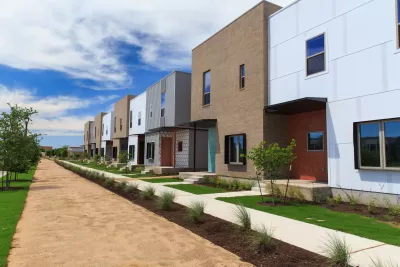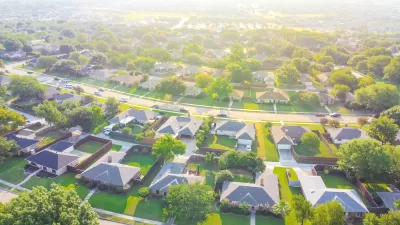The study highlights high real estate costs as well as restrictive zoning regulations and building requirements that delay multi-family construction.

New studies from the University of Texas commissioned by the city of Austin reveal the causes of high housing construction costs in the city and propose solutions for reducing them, reports Ben Thompson in Community Impact.
“Among analysts' top findings were Austin's standout costs compared to other cities, as well as the competitive local cost of multifamily versus single-family development and the elevated price tag of construction on the west side,” Thompson adds.
With the cost of land and construction materials and labor rising, city regulations that add extra costs are more likely to make or break a project, according to the study. “Although the city has sought to speed up those processes for years, builders are still experiencing the effects of a slower system that can end up passing costs along to residents.”
Researchers also found that multi-family housing is the cheapest to build, but faces the most obstacles from local building regulations and zoning codes.
Recommendations for making housing construction faster and more affordable include: implementing zoning reforms that permits more housing types, reducing labor costs through workforce training, limiting regulatory constraints such as parking requirements, and improving incentive programs for affordable housing developers.

Planetizen Federal Action Tracker
A weekly monitor of how Trump’s orders and actions are impacting planners and planning in America.

Maui's Vacation Rental Debate Turns Ugly
Verbal attacks, misinformation campaigns and fistfights plague a high-stakes debate to convert thousands of vacation rentals into long-term housing.

Restaurant Patios Were a Pandemic Win — Why Were They so Hard to Keep?
Social distancing requirements and changes in travel patterns prompted cities to pilot new uses for street and sidewalk space. Then it got complicated.

In California Battle of Housing vs. Environment, Housing Just Won
A new state law significantly limits the power of CEQA, an environmental review law that served as a powerful tool for blocking new development.

Boulder Eliminates Parking Minimums Citywide
Officials estimate the cost of building a single underground parking space at up to $100,000.

Orange County, Florida Adopts Largest US “Sprawl Repair” Code
The ‘Orange Code’ seeks to rectify decades of sprawl-inducing, car-oriented development.
Urban Design for Planners 1: Software Tools
This six-course series explores essential urban design concepts using open source software and equips planners with the tools they need to participate fully in the urban design process.
Planning for Universal Design
Learn the tools for implementing Universal Design in planning regulations.
Heyer Gruel & Associates PA
JM Goldson LLC
Custer County Colorado
City of Camden Redevelopment Agency
City of Astoria
Transportation Research & Education Center (TREC) at Portland State University
Jefferson Parish Government
Camden Redevelopment Agency
City of Claremont





























